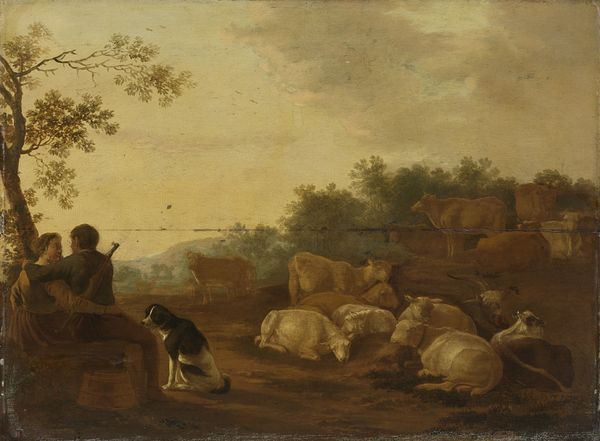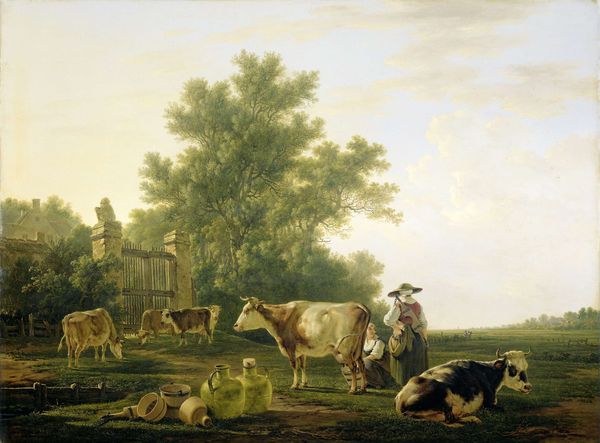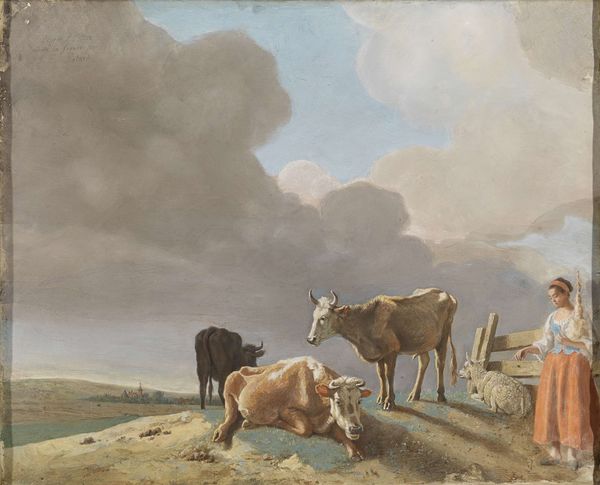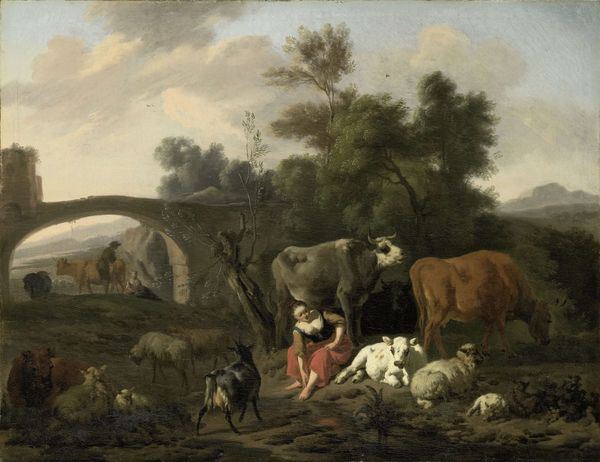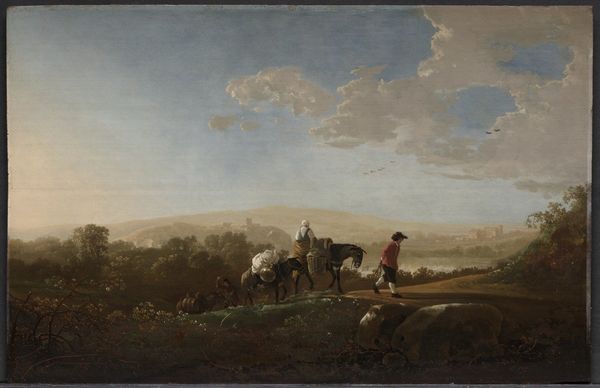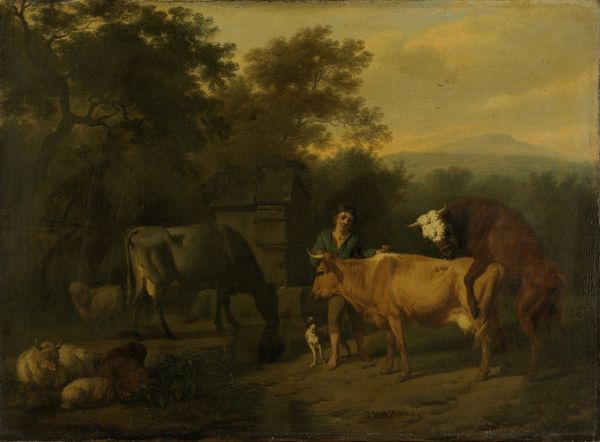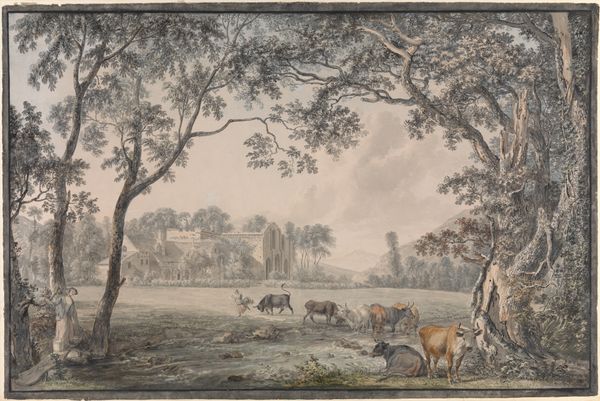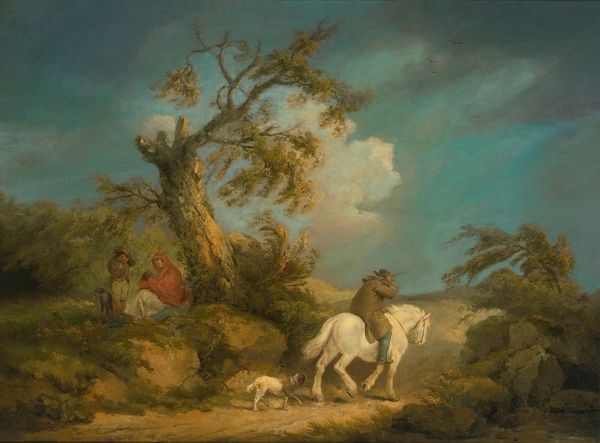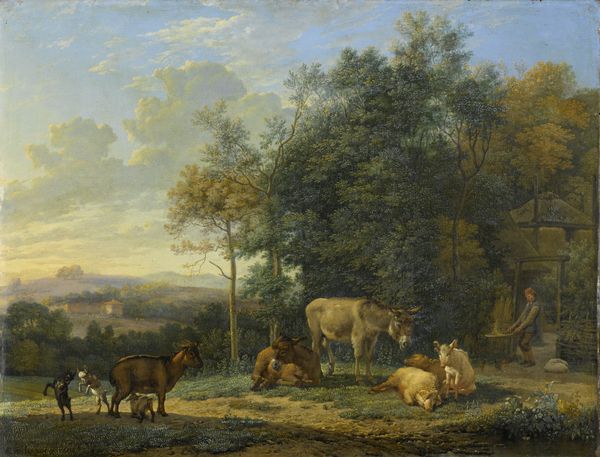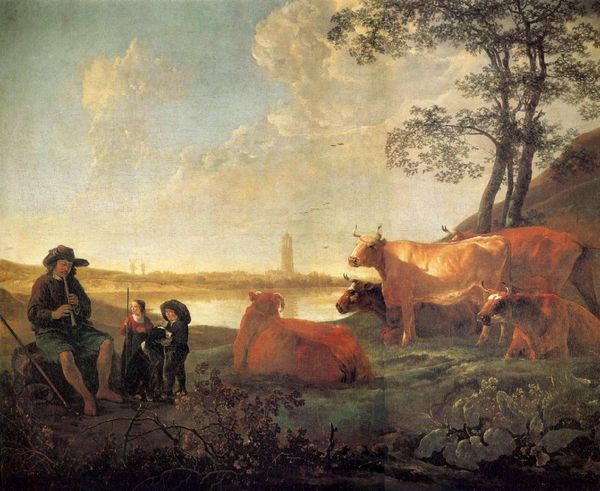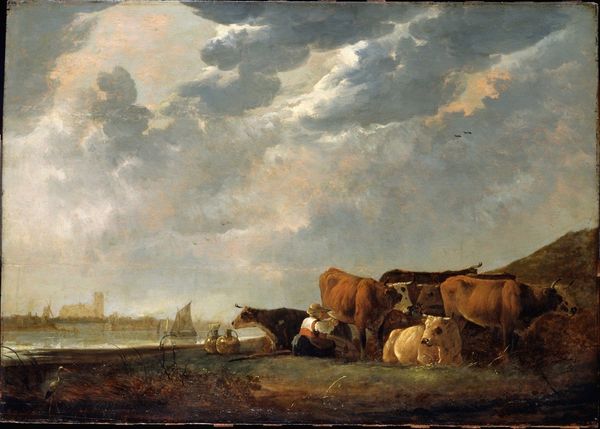
painting, plein-air, watercolor
#
animal
#
dutch-golden-age
#
painting
#
plein-air
#
landscape
#
watercolor
#
coloured pencil
#
genre-painting
#
watercolor
Copyright: Public Domain: Artvee
Curator: Aelbert Cuyp, a prominent figure in Dutch Golden Age painting, is often celebrated for his idyllic landscapes. Here, we see his work "Auf einer Wiese Kühe und Schafe, in der Ferne eine Stadt, links eine Melkerin"—which translates to "Cows and Sheep in a Meadow, with a Town in the Distance and a Milkmaid on the Left." Editor: It feels like a scene from a pastoral dream, doesn't it? The muted colors and hazy light create such a peaceful, almost sleepy atmosphere. I immediately notice the animals taking center stage. Curator: Indeed. Cuyp expertly uses light to accentuate the texture of the cows' coats and the sheep's wool. This is very in line with the period's taste for genre painting and its attention to the beauty of everyday life. But let's also consider how the Dutch landscape itself was being used as a national symbol in the 17th century. Editor: You're right. There's this tension, isn't there? The almost overwhelming tranquility belies the economic and political underpinnings of the time. This image idealizes rural labor without engaging in its complexities. I do appreciate, however, that he includes the female milker in the foreground, adding labor, and perhaps the human scale to the piece. Curator: The deliberate inclusion of the distant cityscape also plays into the larger themes of the Dutch Golden Age—the harmony between city and country, prosperity built upon agriculture, trade, and civic life. What's striking to me, however, is that this is achieved through the skillful deployment of plein-air watercolors. It emphasizes that Cuyp wasn't working solely in the studio. Editor: From my vantage, I view the artist’s selection of ordinary, non-aristocratic figures and his careful handling of watercolor as a deliberate artistic choice that highlights the everyday experience and acknowledges it as culturally relevant. Curator: Ultimately, it's an artwork that encapsulates the calm, affluence, and pride that characterized the Dutch Golden Age. Its impact is that it still reminds the public of this era’s social aspirations. Editor: The use of a genre painting serves a function and tells us a lot about the intersection of culture and gender that existed at the time, with respect to labor, and I think, in its seeming simplicity, is what allows this painting to resonate so profoundly with contemporary audiences.
Comments
No comments
Be the first to comment and join the conversation on the ultimate creative platform.


